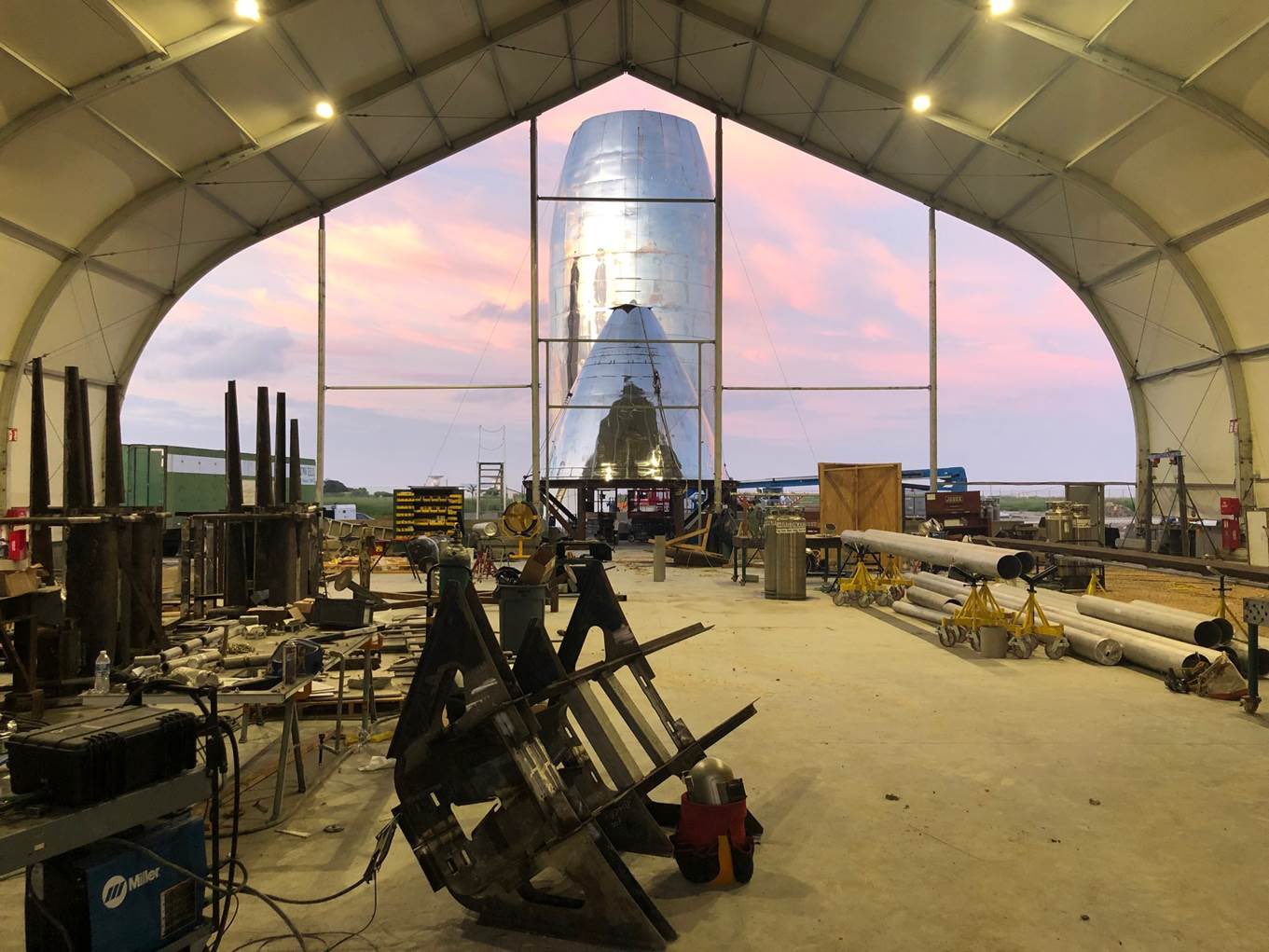
SpaceX's next Starship prototype won't be just a concept vehicle for much longer.
Construction of the test craft is proceeding apace, as two new photos posted on Twitter today (Sept. 17) by company founder and CEO Elon Musk reveal.
One of the images shows the vehicle — apparently Starship Mk1, which is being assembled at SpaceX's South Texas facility, near the village of Boca Chica — in the background, standing behind a building that contains a variety of parts and other equipment. (SpaceX is also building a similar prototype, called Starship Mk2, at the company's Florida facilities, reasoning that a little intracompany competition will improve the vehicle's final design.)
Related: SpaceX's Starship and Super Heavy Mars Rocket in Pictures
Droid Junkyard, Tatooine pic.twitter.com/yACFR9y04PSeptember 17, 2019
"Droid Junkyard, Tatooine," Musk said via Twitter, referring to Luke Skywalker's home planet in the "Star Wars" movies.
The other photo is a close-up view of a ring-shaped section being lowered onto the Mk1's body. The billionaire entrepreneur had a joky caption for this one as well: "Area 51 of Area 51."
Area 51 of Area 51 pic.twitter.com/Du7i92sFaOSeptember 17, 2019
The Mk1 and Mk2 follow in the footsteps of SpaceX's Starhopper vehicle, which was retired after acing a big test flight last month. But the new vehicles are far more ambitious and more capable. Whereas Starhopper sported just a single Raptor engine and stayed within a few hundred feet of the ground, for example, the Mk1 and Mk2 will be powered by at least three Raptors and will go much higher.
Get the Space.com Newsletter
Breaking space news, the latest updates on rocket launches, skywatching events and more!
SpaceX is aiming for a test flight that gets 12 miles (20 kilometers) up in October, followed by an orbital attempt "shortly thereafter," Musk said late last month.
All of these steps are leading toward the final Starship, SpaceX's planned Mars-colonizing craft. That Starship will be capable of carrying 100 passengers and will launch atop a huge rocket called the Super Heavy. Both of the elements, rocket and spaceship, will be fully and rapidly reusable, Musk has said.
The final Starship, as currently envisioned, will sport six Raptors, while the Super Heavy will be powered by 35 of the engines. Those numbers could change, however; Musk is scheduled to give a Starship design update on Sept. 28 from the South Texas site.
The Mk1 should be fully assembled by that time, he has said.
The Mk1 and Mk2 test campaigns won't be terribly lengthy, if SpaceX's planned schedules hold. Company representatives have said that the first operational flights of Starship, which are likely to be commercial satellite launches, could come as early as 2021. (Eventually, SpaceX plans to use Starship for all the company's spaceflight needs, from interplanetary colonization missions to satellite launches to point-to-point trips around Earth.)
And SpaceX is targeting 2023 for a crewed mission of the vehicle: a flight around the moon booked by Japanese billionaire Yusaku Maezawa.
- Elon Musk: Revolutionary Private Space Entrepreneur
- See the Evolution of SpaceX's Rockets in Pictures
- SpaceX: First Private Flights to Space Station
Mike Wall's book about the search for alien life, "Out There" (Grand Central Publishing, 2018; illustrated by Karl Tate), is out now. Follow him on Twitter @michaeldwall. Follow us on Twitter @Spacedotcom or Facebook.
Join our Space Forums to keep talking space on the latest missions, night sky and more! And if you have a news tip, correction or comment, let us know at: community@space.com.

Michael Wall is a Senior Space Writer with Space.com and joined the team in 2010. He primarily covers exoplanets, spaceflight and military space, but has been known to dabble in the space art beat. His book about the search for alien life, "Out There," was published on Nov. 13, 2018. Before becoming a science writer, Michael worked as a herpetologist and wildlife biologist. He has a Ph.D. in evolutionary biology from the University of Sydney, Australia, a bachelor's degree from the University of Arizona, and a graduate certificate in science writing from the University of California, Santa Cruz. To find out what his latest project is, you can follow Michael on Twitter.









